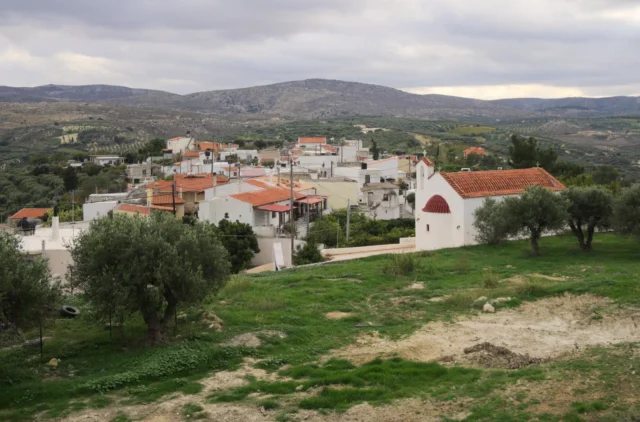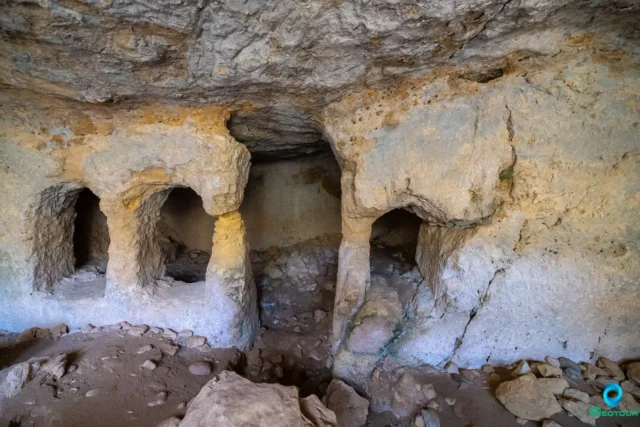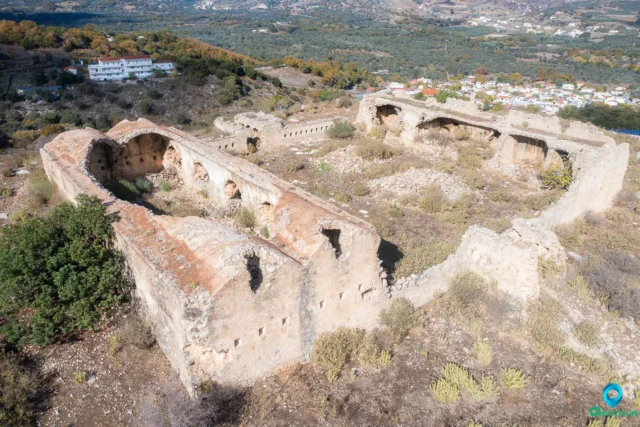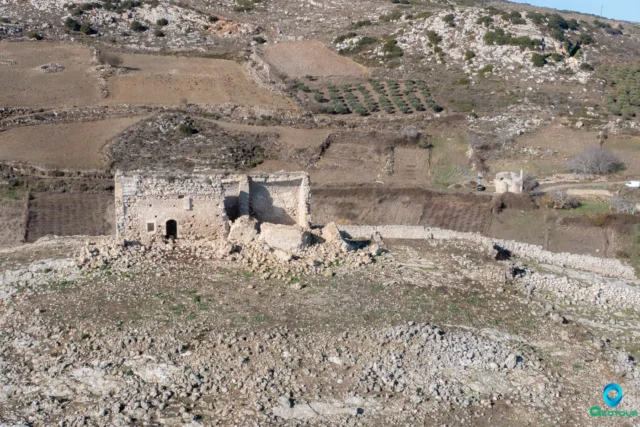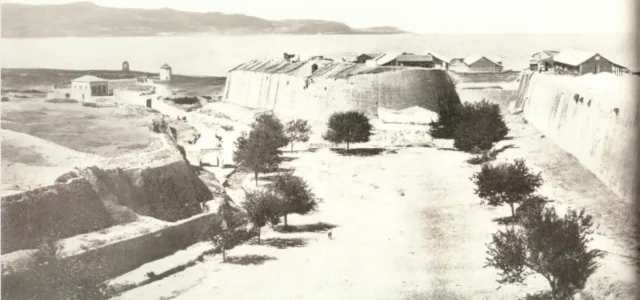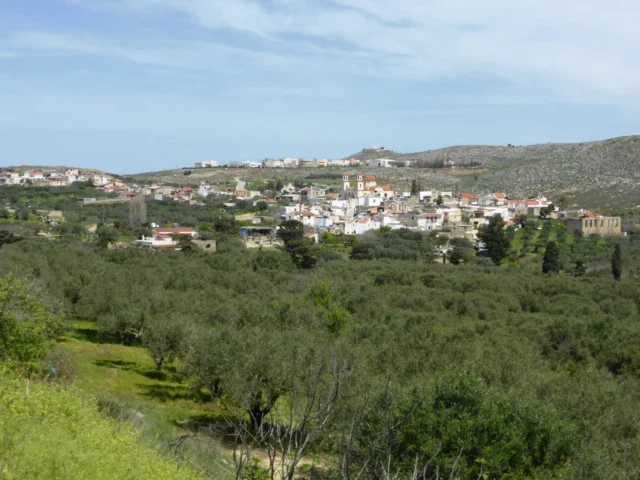829
listings found
Categories
Active filters:
Galipe, Chersonissos
Galipe, a historic village in Heraklion, Crete, sits at 280 meters above sea level. First documented in 1299, Galipe's history reflects Venetian and Ottoman influences. The 16th-century Church of the Assumption of the Virgin Mary, featuring a Venetian tomb monument, and the 15th-century Old Church of Agios Nikolaos are key landmarks. A central stone fountain adds to the village's charm. Galipe's economy centers on agriculture, particularly grapes and olives. The village's population has fluctuated over time, reflecting its dynamic history.
Epaithros: Greece’s Rural Tourism Network
Epaithros: Greece's pioneering cooperative network supporting and advancing rural tourism.
Siderospilia near Roufas
Siderospilia, meaning "Iron Caves," is a complex of three interconnected chambers carved into limestone bedrock near Roufas, Crete. Its purpose is debated, with theories ranging from blacksmith workshop to Roman-era burial site. Chamber 1 features a broken supporting column, roof opening, and stone bench. Chamber 2 is larger, with niches for burials. Chamber 3 resembles an early Christian church, with a dividing wall and door. Local legends link the cave to blacksmiths, ghosts, and eerie sounds. Some believe it was a dwelling before becoming a necropolis. The cave's location near a stream and possible ancient structures adds to its significance. Siderospilia is accessible but lacks official signage.
The Koules of Koxare
The Koules of Koxare is an Ottoman-era fortress located near Koxare village at the entrance of Kourtaliotiko Gorge in Rethymno Prefecture, Crete. Built between 1866 and 1869, it was part of a network of fortifications designed to control movement and quell rebellions on the island. The Koules is characterized by a large internal courtyard, thick stone walls, and remnants of arched structures. Partially destroyed in 1896 during the Cretan revolution, it stands as a testament to the island's struggle for freedom from Ottoman rule. Despite its deteriorated state, the Koxare Koules remains an important historical landmark with potential for preservation and tourism development.
Tholoi Fortress near Alagni
The Tholoi Fortress, near Alagni, Crete, dates to the 16th-17th century, reflecting Venetian and Ottoman periods. Situated on a hilltop, it served as a strategic point for surveillance and defense. Its design shows Venetian villa influences, with local stone construction. The fortress, now in ruins, experienced damage, including from the 2021 Arkalochori earthquake, but the outer wall remains. Nearby, the 15th-16th century Church of Agioi Apostoloi, bearing the Corner family crest, suggests a connection to the fortress, possibly as a spiritual center. The fortress, with dimensions of 15 by 9 meters, played a role in Venetian-Ottoman conflicts and potentially as a Turkish "koules" during the 1866-1869 Cretan Revolution.
Sata, Amari
Sata is a settlement located in the Rethymno regional unit on the island of Crete, Greece. It belongs to the Municipality of Amari
The Palm Forest of Agios Nikitas
The palm forest of Agios Nikitas in Crete is the only place on the island where the Cretan palm grows at a distance from the sea.
Mardati, Agios Nikolaos
Mardati is a settlement located in the Lasithi regional unit on the island of Crete, Greece. It belongs to the Municipality of Agios Nikolaos
Voulismeni, Agios Nikolaos
Voulismeni is a settlement located in the Lasithi regional unit on the island of Crete, Greece. It belongs to the Municipality of Agios Nikolaos
Vrachasi, Agios Nikolaos
Vrachasi is a settlement located in the Lasithi regional unit on the island of Crete, Greece. It belongs to the Municipality of Agios Nikolaos
Dreros, ancient city
Dreros, also known as Driros, is an archaeological site near Neapoli in Crete, significant for its post-Minoan remains from the early Archaic Period. Flourishing from the 8th to 6th centuries BC, Dreros was an important center of trade and culture, known for its harbor, temples, bronze working, and pottery. The city, built on two hills, features a sanctuary dedicated to Apollo Delphinios, where 8th century BC bronze statuettes of Apollo, Artemis, and Leto were discovered. A large, open cistern, possibly used for ritual purposes, was found in the agora, the city's public gathering space. Inscriptions reveal a board of officials called the 'Twenty of the Polis' and the division of the people into 'phylai' or tribes. The site includes one of the earliest known examples of a Greek temple, dedicated to Apollo Delphinios. Dreros declined in importance after the 6th century BC and was eventually abandoned.
Saint Andrew Bastion and Gate
Agios Andreas Bastion, a crucial defensive point in the Venetian walls of Heraklion, witnessed the fall of Candia to the Ottomans. It's open to the public.
Sabbionara gate – bastion, Heraklion
16th-century Venetian bastion in Heraklion, a key defense during the Siege of Candia. Well-preserved and open to the public.
Kato Metochi, Lasithi plateau
Kato Metochion is a settlement located in the Lasithi regional unit on the island of Crete, Greece. It belongs to the Municipality of Lasithi plateau
Pinakiano, Lasithi plateau
Pinakiano is a settlement located in the Lasithi regional unit on the island of Crete, Greece. It belongs to the Municipality of Lasithi plateau
Lagou, Lasithi plateau
Lagou is a settlement located in the Lasithi regional unit on the island of Crete, Greece. It belongs to the Municipality of Lasithi plateau
Lyttos (Xidas), Minoa – Pediada
Lyttos (until 1987 known as Xidas) is a village in the Municipality of Minoa Pediada, Heraklion regional unit, Crete, Greece. It is located at an altitude of 510 meters on […]
Patsideros, Minoa – Pediada
Choumeri is a settlement located in the Heraklion regional unit on the island of Crete, Greece. It belongs to the Municipality of Minoa - Pediada
Anopoli, Chersonissos
Anopoli is a settlement located in the Heraklion regional unit on the island of Crete, Greece. It belongs to the Municipality of Chersonissos
Aitania, Chersonissos
Aitania, a village in Heraklion, Crete, is 20 km from Heraklion. Its name is believed to be a corruption of the ancient city of Diatonion. Aitania is recorded in a Venetian document from 1212 as "Icania." The Venetian census of 1583 lists it as "Itagnia Cato" with 112 inhabitants and "Itagnia Apano" with 85 inhabitants. On October 12, 1856, a major earthquake with a magnitude of 8.2 struck Crete, causing significant damage and resulting in the death of 40 people in Aitania. In 1954, archaeologist N. Platon excavated a small, cave-like carved tomb west of Aitania at a site called "Fonias." The tomb contained approximately thirty Geometric period vessels. The village square is a central gathering point for residents and visitors, with traditional cafes. The Cultural Association of Aitania organizes a Cretan feast in the square every year on August 15th.









